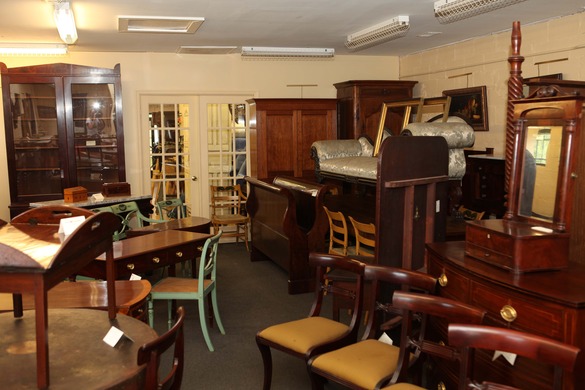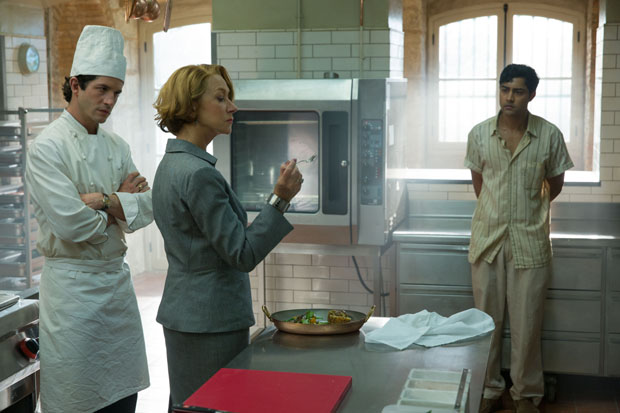The Art of Restoring Antiques
01 Sep 2012
A master craftsman when it comes to bringing 100 year-old furniture back to life, Gary Leon has worked on some of the rarest antique pieces, including those owned by top celebrities.
By DENISE K. JAMES

As a child, Gary Leon, owner of Leon Vanderbilt Antiques, had already developed a certain interest in the past.
“When I was a young boy of about eleven years old, pedaling my bicycle around the New York Hamptons, I purchased my first antique,” he says, stretching out in his comfortable office chair.
“It was an old Oak barrel, filled to the brim with books. I was a history buff in the making, you see. I could not wait for my mother to come with me to the store and help me transport it home.”
The Oak barrel of books was just the beginning of Leon’s impressive career in the restoration of fine furniture. He spent his teenaged years researching history, art, and art history. Then after graduating from college, Leon got a job helping out “two Italian guys,” he says, “for about a year.” He then worked at a series of antique shops, eager to learn as much as possible about the business, before landing a position at Hyde Park, one of the world’s renowned antique dealers.
“It was at Hyde Park that I truly honed my craft,” he muses. “I spent seven years there, restoring 16th, 17th and 18th century furniture.”
“How did you end up starting your own business after that?” I ask.
“Well, I’ll tell you,” he says, leaning in for emphasis. “I had a very lucky break one day. This delivery guy asked me to help him transport a piece to the famous Carlisle Hotel in New York City. Of course, I said I would. Well, when we got to the Carlisle, I discovered that it was none other than the actor Paul Newman who needed the piece restored!”
“I was fortunate to build a relationship, through Paul Newman, with a lot of well-known folks in New York City. So I struck out on my own after that, once I had the financial ability to do so."
Leon’s business, eventually located in Connecticut, became one of the most well established in antique restoration.
“I’ve got scrapbooks full of the memorable people and places I’ve worked for,” he says. “One of the highlights of my career was the day I received a call about eight very rare chairs—only 16 of these were ever made—that had been water damaged. I said to send the chairs over to me. Once I started to rectify the water damage I was informed that the chairs belonged to Bill Cosby. I became his primary restorer, and I worked on his town home behind the Frick in New York.”
“Wow, you have met a lot of famous people,” I comment, trying to sound nonchalant.
“Yes, but I absolutely fell in love with the Charleston area. I purchased a home on Seabrook Island and I later decided to reopen my business, since I felt like I have a contribution to make to this community. We've now been here for two years."
When looking around Leon Vanderbilt Antiques, located in the industrial district of King Street, one can tell that the process of restoring antique furniture is a serious one. And why shouldn’t it be, given the profound love that Leon's clients have for tradition?
“Our main focus here is working on higher-end antiques,” he notes. “We restore fine furniture, including some work with the Historic Charleston Foundation as well as other fine homes in the area.”
Leon’s process of restoring antique furniture is not of the corner-cutting variety; whereas some antiques have merely been “sprayed” into decent condition, the Leon Vanderbilt team actually shellacs by hand and uses real French polish on the finish.
“How do you find pieces that need your TLC?” I ask him. “Do you scout out all the antiques yourself?”
“Not entirely,” he replies. “I’m hooked into about 300 auctions all over the world, so I do have people who find things for me—they are called either ‘runners’ or ‘pickers’ in the industry. The ‘runners’ go to the shows and get what you ask them to pick up; the ‘pickers’ try to pick out what they think I might like. I also look at trade publications.”
Surprisingly, when it comes to the Internet, Leon is wary of what is out there—and urges other antique scouts to be the same way.
“The word ‘antique’ is grossly misused on the Internet,” he declares. “For the novice antique hunter, it can be downright dangerous. If you are just starting to collect I recommend checking with the people you trust and know first. And be specific about what it is that you want. Even in antique shops, be careful and make sure you’re familiarized with pieces. Pick the brains of older people! Even I get a lot of phone calls—advice is always free.”
As far as ground rules, Leon has a few that he adheres to. An antique, first of all, must be at least 100 years old. It also must be in at least 50% of its original state—in other words, the piece should not be largely changed from its initial form.
“Honestly, though 50% qualifies, I try to find pieces that are 90%, even 100%, in the original form,” Leon says. “Frankly I can deal with a few changed knobs but not a whole lot more than that.” He pauses. “I don’t want to deal with more than that—I’m in a position where I can, and I do, offer the real thing.”
“What would you say to someone who is just starting to put a home together and desires antique furniture?” I ask.
“My philosophy is, you should sincerely love the item and its price should fit easily into your budget,” he says. “You can do the hunting yourself, or you can let someone hunt—we often seek out what our clients ask for.”
“Has the process of hunting changed much in the last 37 years?” I wonder out loud.
“Absolutely. It’s a lot more defined because of the Internet—the influx of information and the ease with which people stay linked. Years ago, we relied more on newspapers, print media and even word of mouth.”
Another way Leon leads the Charleston antique circuit is by lecturing every so often for the Historic Charleston Foundation. He recently presented a program called “Fakes & Forgeries,” where he actually brought in a phony antique and showed it to the audience as a lesson in authenticity.
“It was a lot of fun,” he says. "I hope everyone learned something."
"I'm not much for crowds, so I don't tend to frequent the larger events in the city," he says. "But otherwise Charleston is the perfect place for me right now; it has charm, culture and a lot of vibrancy. And the beach!" 843-577-0520, www.leonvanderbiltantiques.com.












